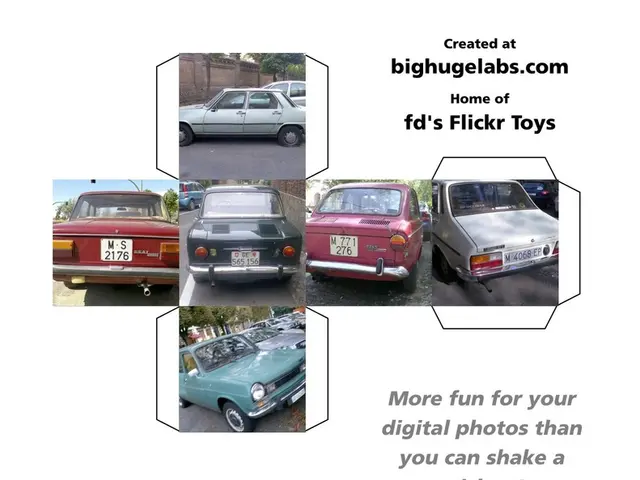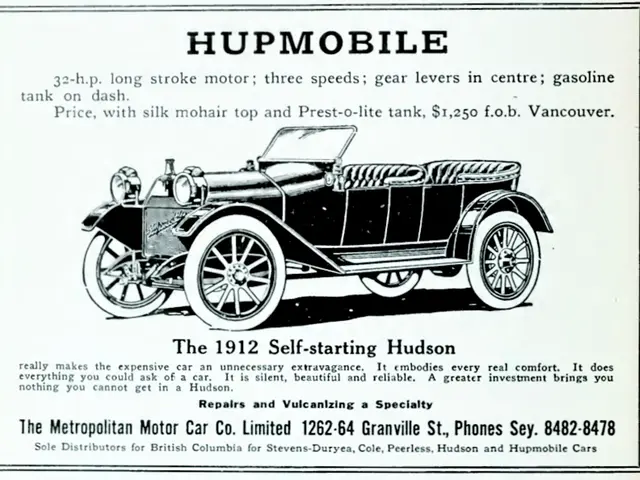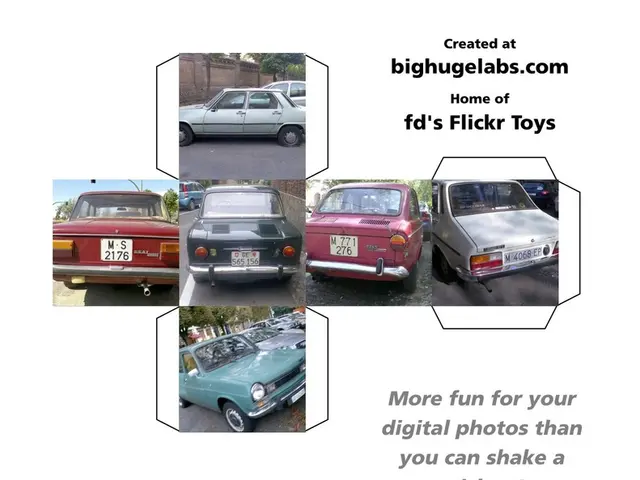Emotionally charged Lexus ES steps onto the European stage - luxury reimagined, minus the V8 roar
Luxury sedan Lexus ES showcases colorful and sculpted design during its European debut
Ready to slay the luxury sedan market, Lexus has given its Business-class ES model a heartfelt makeover. Here's why the new ES promises to be more than just a smooth ride.
Let's face it, Germany isn't Lexus' prime market, and that's clear as day in the powertrains. The V8 engine, a staple in the American Lexus lineup, is conspicuously absent, even in Europe. And it seems German and Japanese luxury car enthusiasts are embracing this shift, as even the LS model bowed out of the V8 race. Yet, the ES series, once a rare sight in Europe, has impressively resurfaced, outshining the GS in terms of development and modernization.
But enough about the power beneath the hood. The ES 500e model name alone is enough to ignite desire, tapping into the rich legacy of the Mercedes "Five Hundred" as the epitome of luxurious power. Lexus has borrowed the name since 1989, but the ES top model remains electric, eschewing the gas-guzzling V8 for silent, rechargeable power. At 343 hp, it's endowed with ample power, lacking the over-the-top brutality typically associated with luxury vehicles. Lexus is also keeping the top speed under wraps, but the all-wheel-drive model is expected to boast a WLTP range of 530 kilometers.
Those seeking a more relaxed and cost-effective electric experience can opt for the ES 350e. With 224 hp and 77kWh battery power, it tackles the 0-100 km/h sprint in 8.2 seconds. As for its range, Lexus hasn't shared the details just yet.
For those still wary of electric vehicles, the ES 300h hybrid offers comfort in familiar territory. With 201 hp, it can sprint from 0-100 km/h in around eight seconds, courtesy of a 2.5-liter gasoline engine. As with all Lexus models, the powertrain components are seamlessly integrated into the power-split system for impeccable automation. However, the powertrains seem relaxed compared to the competition.
But the ES doesn't simply stand out in terms of power. It breaks new ground in dimensions, almost reaching upper-class car size (5.14 meters long), outdoing the current BMW 5 Series (5.06 meters long). But BMW is more efficient with space, boasting a 3-meter wheelbase compared to the ES' 2.95 meters. While the trunk space in the BMW isn't lavish, the ES rear seat space is nothing short of regal, thanks to its compact axle design and smart use of electric components. The ES also offers an optional ottoman-style rear seat with a footrest, taking luxury seating to a whole new level.
Whether you're enjoying a chauffeur-driven or self-driven ride, the new ES offers refined handling, thanks to a new rear axle construction with a multi-link suspension and variable ratio steering. Whether it measures up to the comfort and precision of previous models remains to be seen.
The interior designers on the Lexus ES have embarked on a near radical transformation. The clutter of buttons has been replaced by a tidied console, accentuated by a large central touchscreen and elegant bamboo applications with customizable lighting. Lexus has opted for touch-sensitive surfaces instead of physical buttons, simplifying the car's operation.
European designers have overseen the infotainment system upgrade, introducing shortcuts, widgets, and an EV menu for effortless charging management and battery optimization. The electric models can charge at a maximum power of 150 kW, taking 30 minutes to reach 80% charge. It's apparent that Lexus is playing catch-up with the competition in terms of charging speed and efficiency.
The new, emotionally redesigned, and expanded Lexus ES won't be available until spring 2026. As it enters the European market, it's poised to create ripples, with its striking design and impressive luxury features. Whether it manages to outshine the established competition, like the BMW 5 Series, remains to be seen. But one thing is certain: Lexus is readying to step up its game in the luxury sedan segment.
Inside Scoop
While the 2026 Lexus ES impresses with its premium interior design, advanced technology, and electric options, it falls short in some areas compared to its rivals. For instance, the BMW 5 Series boasts more space and a sportier driving experience, thanks to its superior handling and powerful engine options. However, the choice between these vehicles depends on personal preferences, as each offers a unique blend of luxury, performance, and innovation.
- The ES 500e, with its electric power and heritage name, aligns with the luxury standards set by the Mercedes "Five Hundred," distancing itself from the traditional V8 engines.
- The community policy in the new ES focuses on sustainable finance, as evidenced by the electric vehicle options and the commitment to optimizing battery performance.
- In the realm of vocational training, the automotive industry might find the ES valuable, given its innovative features and integration of advanced technology such as electric components, touch-sensitive surfaces, and improved charging capabilities.
- As for transportation and lifestyle, the spacious interior, luxurious seating options, and long WLTP range of the ES 500e make it an attractive choice for those who value comfort, silence, and environmental responsibility in their cars.








